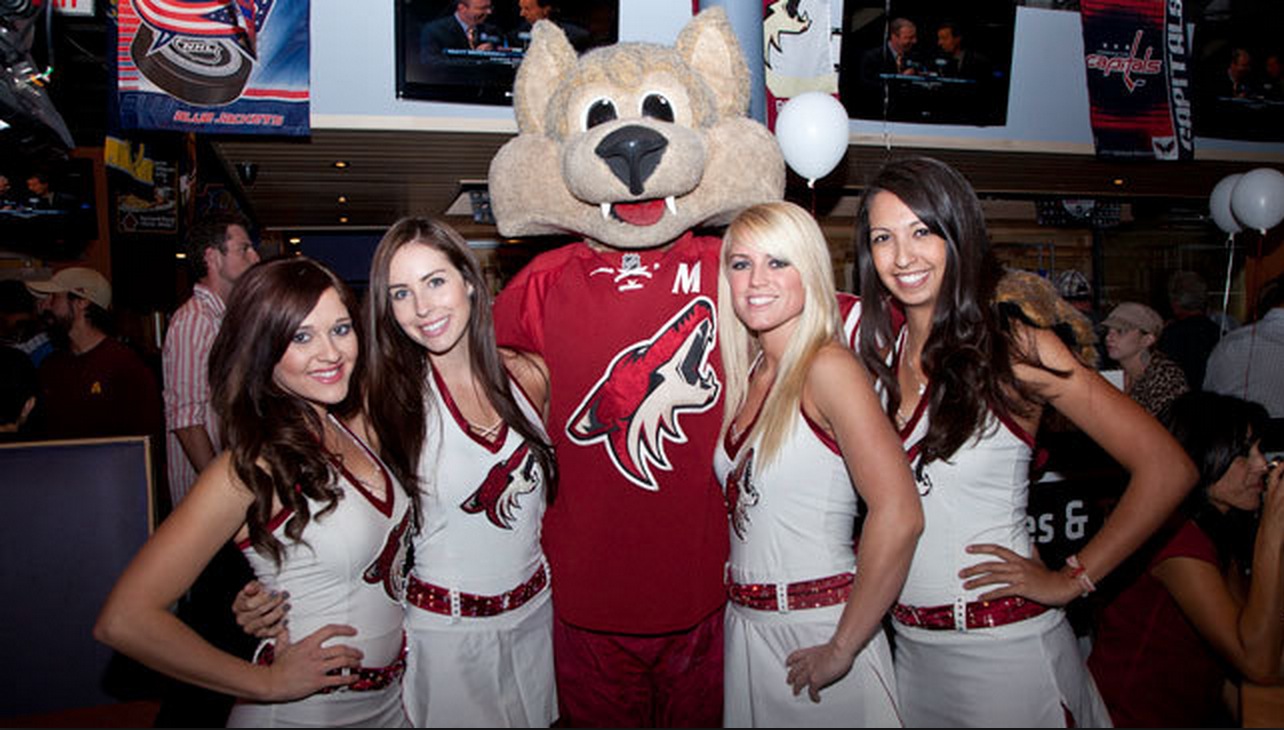By Tom O’Brien
In today’s society, there are few institutions that hold more importance than sports. Municipalities have been building new stadiums and practice facilities for professional sports franchises at an alarming rate since the mid 90’s. Tax-payer funded stadiums and facilities are often justified by local officials with the promise of local revenues from parking, concessions, new jobs, and additional taxes levied. More often than not, none of these promises fully come to fruition, leaving local tax payers high and dry.
The city of Glendale, Arizona has perhaps the worst deal with the NHL’s Arizona Coyotes. Over the past decade, the city of Glendale has shelled out tens of millions of dollars to keep the Coyotes, who are annually in the bottom three in attendance in Arizona. All of this has come at an enormous loss for local citizens, who have seen their beloved city dive head-first into the red.
The city of Glendale has bailed out the Coyotes from bankruptcy and agreed to give new owners, IceArizona $15 million a year to keep them in Glendale, in addition to the $50 million the city shelled out to manage the arena and keep the Coyotes afloat. To summarize just how raw of a deal Glendale taxpayers got, an investigative piece by Reuters summarized the one-sided agreement. “In 2011, the city pulled $25 million fee from Glendale’s sanitation and landfill funds. When no owner was found by the second year, the NHL asked for another $25 million, which came from water, vehicles, technology replacement, and the general fund. “By the third year,” said Clark. “We were bleeding.” The general fund plummeted from a $66.4 million surplus in 2006 to a $26.7 million deficit in 2012.
To make up the difference, the city raised its sales tax by a third, cut 22 percent of its workforce, and, in a terrible irony, eliminated some youth sports like t-ball and flag football. Emergency Medical Service calls increased by 23 percent over a five-year period, but there were fewer workers to respond. And Glendale’s firefighters claimed 911 response times increased by two minutes.
Meanwhile, the NHL found a new owner, IceArizona, that would keep the team in Glendale. But there was a catch. The city had to pay $15 million a year in arena management fees, a cost equal to its entire general fund budget for parks, recreation, library and in 2011, the city pulled $25 million fee from Glendale’s sanitation and landfill funds. When no owner was found by the second year, the NHL asked for another $25 million, which came from water, vehicles, technology replacement, and the general fund. “By the third year,” said Clark. “We were bleeding.” The general fund plummeted from a $66.4 million surplus in 2006 to a $26.7 million deficit in 2012.
To make up the difference, the city raised its sales tax by a third, cut 22 percent of its workforce, and, in a terrible irony, eliminated some youth sports like t-ball and flag football. Emergency Medical Service calls increased by 23 percent over a five-year period, but there were fewer workers to respond. And Glendale’s firefighters claimed 911 response times increased by two minutes.
Glendale signed the deal, but the arena had already turned into a financial sinkhole. After dropping $50 million on NHL fees, Glendale still had an average $12.8 million in annual debt service related to building the arena. In return, the city earned back just $5.9 million during the first year in arena-tied revenues.
Glendale signed the deal, but the arena had already turned into a financial sinkhole. After dropping $50 million on NHL fees, Glendale still had an average $12.8 million in annual debt service related to building the arena. In return, the city earned back just $5.9 million during the first year in arena-tied revenues.”
It’s slightly possible this would have been an easier pill to swallow for local residents if they truly loved the Coyotes, but that has been far from the case. Since moving from Winnipeg after the 96-97 season, the Coyotes have consistently ranked toward the bottom in attendance. With the exception of a deep playoff run in 2012, the product on the ice has been a colossal failure, consistently finishing toward the bottom of the NHL’s western conference.
As bleak as this situation has been for Glendale, there is hope. Today, the city council said they were pursuing an out clause after learning that a portion of the $15 million dollar annual subsidy was used to pay the franchises debt rather than go toward the lease. If this shows us anything it’s that subsidizing professional sports teams almost always is a bad deal for local tax-payers. Let’s hope for the city of Glendale’s sake, they can rid themselves of this burden.




